
|

1979 RECIPIENT
Monique Cliche-Spénard — Quilt Artist
About the craftsperson
|
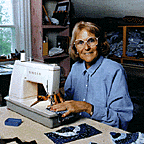
|
"With her undeniable love of drawing and the ordering of colours, Monique
worked to bring new vitality to the art of quilting and to make it so
attractive that it would blend with any decor, modern or traditional,
because of its varied tones and dimensions. Monique has accomplished the
task she set herself of reviving a tradition and introducing it not only to
countless Quebec homes but across Canada and abroad. She has rekindled
people's love of the past in a form that is novel, beautiful and useful.
Because of Monique, quilting is once again a part of everyday life, whether
the finished product is signed by Cliche-Spénard or another agile hand."
Luce Bernard
Placer gold miner
Dawson, Yukon Territory
|
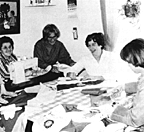
|
Quilting at the Atelier
Monique Cliche-Spénard,
Saint-Joseph-de-Beauce, 1979;
the artist is second from left
|

|
|
Having achieved a basic repertoire of skills, craftspeople have to follow
their own creative direction, identifying goals and seeking artistic
maturity. This process takes time and the choices are varied. Some
craftspeople, as for example Monique Cliche-Spénard, look to their ancestry
and regional roots. Others immerse themselves in the cultural traditions of
other societies as well as their own, as did Micheline Beauchemin. The
potter, Wayne Ngan, made yet another choice. Drawing on both ancient and
modern sources, he seeks integration with the environment in terms of both
his personal Life and his craft.
A native of the Chaudière River valley in Quebec's Beauce region,
Monique Cliche-Spénard is a direct descendant of one of the region's
eighteenth-century seigneurial families. Acting on her father's conviction
that "a people without tradition is a dying people" and on her own belief
that "all will be lost when our families no longer remember those things",
she sought to depict the old ways of her people, the Beaucerons.
|
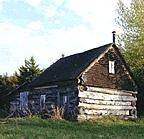
|
Cliche-Spénard's interest in woven fabrics led her to collect a variety of
antique Beauce textiles, as well as hand-carved butter and sugar moulds,
to preserve them from neglect and commercial exploitation. She researched
and documented the quilts in her antique textile collection, studied
traditional quilting techniques from the women of the Beauce, and began to
construct her own unique quilts. The first quilt she made depicted
traditional sugar moulds:
"I wanted to tell people about the Beauce and I was looking for a visual
means of doing it. Having a collection of sugar moulds at home, I thought
of enlarging the patterns and explaining to people the reasons for sugar
moulds at that time. I made a quilt. That was when I became known."
|
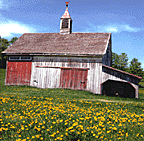
|
In the course of instructing others in the craft of quilting, Cliche-Spénard
came to distinguish between l'art traditionnel, which highlights
folkart motifs and traditional techniques of Beauce quilting, and l'art
populaire, which emphasizes contemporary graphic design and the
quilter's personal statement.
|
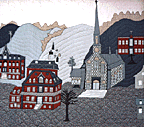
|
The Heart of the Village, 1977
Cotton Cloth
Quilted, appliquéd
230 cm x 202 cm
CMC 86-126
Gift of Ann Mortimer
|

|
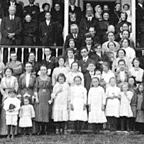
|
The Cliche family
Saint-Joseph-de-Beauce, Quebec
ca. 1900
|

|

|
A modern-day daughter of the Beauce, Cliche-Spénard applied these
distinctions to her own work, reinterpreting the memories of a collective
past, reassembling traditional motifs, adapting old techniques, and
selecting printed and coloured fabrics for their design and effect.
Cliche-Spénard also insisted upon the economic viability of quilting.
Wishing to encourage more Quebec women to profit from one of their
traditional crafts, she began to involve neighbours in the production of
quilts as a cottage industry.
She now has an atelier where Beauce women, trained in all aspects of the
business, produce and market quilts of Cliche-Spénard's design. The success
of the atelier has freed Cliche Spénard to design and work on her own
limited-edition quilts. At times she finds her artschool training, and
artistic ambitions at odds with the conservative views of some of her
neighbours. Nevertheless, these differences fuel a creative tension in her
craft and traditional Beauce quilting is transformed from bedcover to
wall-hanging, and from utilitarian object to an artistic and political
statement about the folk traditions of the Beauce and its people.
|

